issue contents
April 2014 issue

Cover illustration: The trimeric structure of divalent cation tolerance protein CutA1 from Thermus thermophilus (Bagautdinov, p. 404).
IYCr crystallization series
New imaging techniques, particularly AFM, permitted the elucidation of the mechanisms for protein and virus crystal growth. They have also allowed direct visualization of crystal defect structure and the consequences of impurity incorporation.
structural communications
The crystal structures of CutA1 from T. thermophilus HB8 with and without bound Na+ and CutA1 from P. horikoshii OT3 in complex with Na+ have been determined in order to understand metal binding and metal-driven assembly features of the proteins.
Open  access
access
 access
accessThe 1.55 Å resolution X-ray crystal structure of Rv3902c from M. tuberculosis reveals a novel fold.
PDB reference: Rv3902c, 4o6g
Open  access
access
 access
accessThe proteasome-assembly chaperone Nas2 binds to the proteasome subunit Rpt5 using its PDZ domain. The structure of the Nas2 PDZ domain has been determined.
PDB reference: proteasome-assembly chaperone Nas2 PDZ domain, 4o06
The structure of 4-pyridoxolactonase from M. loti was determined.
Structural comparison of four crystal forms of Mycobacterium tuberculosis EspR protein.
PDB reference: EspR, 4ndw
The structure of the kinase domain of Gilgamesh from Drosophila melanogaster was determined at 2.85 Å resolution.
PDB reference: kinase domain of Gilgamesh, 4nt4
Open  access
access
 access
accessThe crystal structure of human nucleosome containing the testis-specific TSH2B variant has been determined. The TSH2B Ser85 residue does not interact with H4 in the nucleosome, and induces a local structural difference between TSH2B and H2B in nucleosomes.
PDB reference: TSH2B nucleosome, 3wkj
The crystal structure of a standalone cohesin protein from the rumen bacterium R. flavefaciens has been determined at 2.44 Å resolution, revealing an elaborate set of secondary-structural elements.
PDB reference: cohesin from R. flavefaciens, 4n2o
Open  access
access
 access
accessThe crystal structure of the Reston ebolavirus VP30 C-terminal domain shows a rotated interface in comparison to the previous structure of the Zaire ebolavirus VP30 C-terminal domain.
PDB reference: Reston ebolavirus VP30 C-terminal domain, 3v7o
crystallization communications
Crystallization of a domain-chimeric L-2,3-butanediol dehydrogenase (L-BDH) designed to possess both the S-configuration specificity of L-BDH and the stability of meso-BDH.
The recombinant α-glucosidase HaG from Halomonas sp. Strain H11 was overexpressed, purified and crystallized to 2.15 Å, and its structure has been determined by molecular replacement.
Among the mammalian adenylyl cyclases, the soluble type 10 cyclase is unique in its activation by bicarbonate and calcium and its lack of a transmembrane region. Here, the recombinant production and crystallization of the catalytic core of the human type 10 adenylyl cyclase are described.
Neutron diffraction studies of human farnesyl pyrophosphate synthase are reported.
The hydrolase BL28 from B. licheniformis was crystallized in the tetragonal space group P41212 and diffraction data were collected to 1.67 Å resolution.
A rational double mutation in the serine acetyl xylo-oligosaccharide esterase from G. stearothermophilus T6 (Axe2) converts the enzyme from an octameric form to a dimeric form. The dimeric double mutant (Axe2-Y184F-W190P) has been crystallized in the orthorhombic space group P212121 and a complete X-ray diffraction data set has been measured for these crystals at 2.3 Å resolution for use in a full three-dimensional structural analysis of this form of the protein.
A putative methyltransferase, YtqB, from B. subtilis was overexpressed, purified and crystallized. X-ray diffraction data were collected from a YtqB crystal to 1.68 Å resolution.
3-Hydroxybutyryl-CoA dehydrogenase from C. butyricum, an enzyme involved in n-butanol production, has been crystallized and X-ray diffraction data from the crystal have been collected and analyzed.
The single-chain methyltransferase of a type I restriction–modification system was expressed and crystallized, and diffraction data were collected to a resolution of 2.31 Å.
The ectoine hydroxylase from S. alaskensis was crystallized, yielding crystals diffracting to 2.1 Å resolution. The addition of iron prior to crystallization led to a different type of crystal, which may represent the iron-bound form of the enzyme.
ArsH from Synechocystis sp. strain PCC 6803 was overproduced, purified and crystallized. Diffraction data were processed to a resolution of 1.6 Å. The crystals belonged to the tetragonal space group I4122, with unit-cell parameters a = b = 127.94, c = 65.86 Å.
Crystallization and preliminary X-ray crystallographic analysis of importin-α from Neurospora crassa
The nuclear import receptor importin-α from the filamentous fungus N. crassa has been crystallized in the presence of a classical NLS peptide. An X-ray diffraction data set was collected and a molecular-replacement solution was obtained.
OXA-23-producing A. baumannii K0420859 can resist the action of carbapenem, and causes bacteraemia, pneumonia, other respiratory-tract and urinary-tract infections in humans. As a novel target for an antibacterial drug against A. baumannii OXA-23, D-alanine-D-alanine ligase from A. baumannii was purified and crystallized, and a primary X-ray crystallographic analysis was performed.
The construct optimization, purification, crystallization and preliminary crystallographic analysis of the ankyrin-repeat domain of Arabidopsis thaliana potassium transporter AKT1 is reported.
Human transglutaminase 2 (TG2) in complex with Ca2+ was crystallized and the crystals were found to belong to the orthorhombic space group C2221, with unit-cell parameters a = 133.08, b = 216.30, c = 166.26 Å. The crystals were obtained at 20°C and diffracted to a resolution of 3.4 Å.
The T. gondii coronin WD40 domain with the conserved region was recombinantly produced, purified and crystallized. A diffraction data set was collected to 1.65 Å resolution.
Manganese lipoxygenase of Geaumannomyces graminis was crystallized and X-ray diffraction data were collected to a resolution of 2.6 Å.
Pyridoxal kinase (PdxK) from S. typhimurium was cloned, purified and crystallized. Successful structure solution was accomplished in spite of strong polycrystalline noise in the oscillation images.
The calcium-binding protein Frq2 from D. melanogaster has been crystallized and X-ray diffraction data from two different crystal forms have been collected.
Crystallization and preliminary X-ray crystallographic analysis of PBPD2 from Listeria monocytogenes
The crystallization of PBPD2 from L. monocytogenes is described.
international union of crystallography
Free 



 journal menu
journal menu













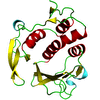

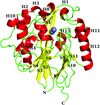
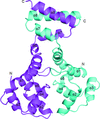
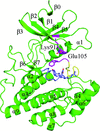









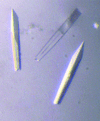













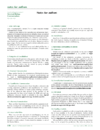
![[publBio]](/logos/publbio.gif)





